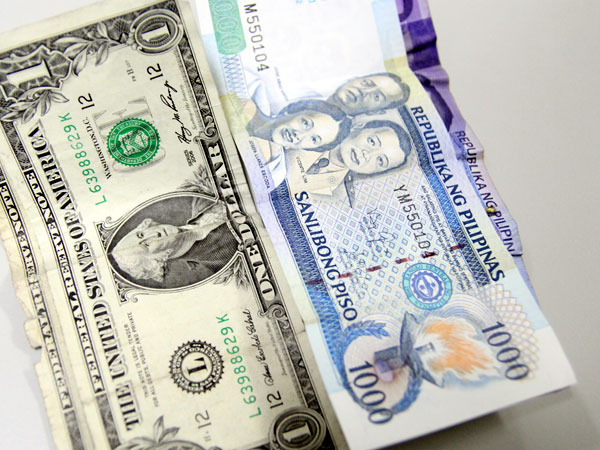The peso may reach its weakest level in more than a decade next year as the dollar continues to surge, helping provide a boost to domestic demand, particularly from remittance beneficiaries and those in the business process outsourcing (BPO) sector.
At the end of this year, the local currency is forecast to close at 47.50 to $1. By next year, the currency could fall by another peso to hit the 48.50: $1 level, according to Standard Chartered bank.
“The peso has been resilient this year, while most of Asia, excluding Japan, currencies have weakened,” Standard Chartered said in a note to clients on Thursday.
“We see room for further weakening, especially if downside risks to growth and the current account materialize,” the bank said, adding the central bank might turn dovish—allowing for more monetary accommodation—if inflation does not pick up to 2 percent next year.
A weaker peso helps boost the income of dollar earners such as exporters, families that rely on migrant remittances and industries such as BPO and tourism. However, this makes foreign debt payments and imported goods such as crude oil more expensive.
The Bangko Sentral ng Pilipinas’ (BSP) main goal is to protect consumers’ purchasing power by keeping prices in check.
The peso’s weakness has helped temper the effects of weaker exports. In peso terms, exports fell a smaller 2.7 percent year-on-year. The boost from the weaker currency was only marginal given the peso’s relative resilience. “Weak export growth may continue in 2016 if global growth remains modest,” Standard Chartered said.
Standard Chartered said it saw the Philippine economy maintaining its modest growth rate in 2016 due to the sustained weakness in exports and slower investments.
